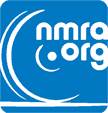


2024 Layout Tours Being Scheduled
Layout Tours are in process of being scheduled and will be
posted here.
If you would like to have your layout included as a part of a layout tour please email the Layout Coordinator at the email address provided below.
The planned tentative dates are provided below and other dates are being considered:
Saturday, May 4th, 1pm to 4 pm, in Virginia as a part of
the Annual meeting and meet at the Arcola Volunteer Fire Department
Annex in Arcola, VA.
Saturday,
July 27th, 1 pm to 4 pm for layouts in Maryland.
Saturday,
October 26th , 1 pm to 4 pm for layouts in Virginia.
Information about Open House Layout Tours
Last modified: March 25 2024 17:23:08.